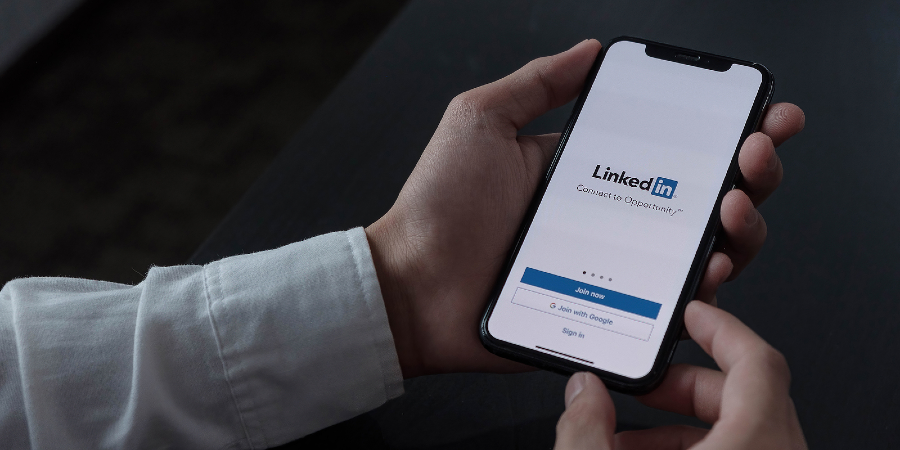

LinkedIn is one of the greatest business tools ever, but it’s often misused—even abused. Your reputation is perhaps your most valuable busines asset. So, your behavior on LinkedIn must reflect the way you want to be perceived. Here’s a list of recommendations for how to position yourself on LinkedIn as a trustworthy professional, and not a jerk.
When setting up—or updating—your profile
- Use a professional headshot, not you cropped out of a group photo from a cocktail party.
- Add an informative graphic to your profile background. If you often speak at conferences, include an image of you on stage, for example.
- Take advantage of the allowed 120 characters to write a rich, benefit-laden headline that indicates the value you offer.
- Produce a conversational, first-person “About” story that details what you can do for others, and positions you as someone people would like to know and perhaps do business with.
- Fill out your profile 100%. That means including highlights of what you’ve accomplished at your current and previous roles, not just listing your title and company for each.
- Keep it current. Update your profile as soon as you change roles or add one (for example, volunteering on an association board).
- Create a customized URL for your profile if needed.
When building your network
- When sending an invitation, always include a note explaining how you are connected and/or why the person should link with you.
- Do at least a bit of research about your target connection, to make your note relevant. “I don’t respond to an invitation where the inviter clearly knows nothing about me and my business,” says Charlene Weisler, head of Weisler Media LLC.
- Avoid cookie-cutter invitation messages like “I’m trying to grow my network” or “I notice we’re in the same industry,” says Jeremy Woolf, fractional CMO. Craft each message afresh. Authenticity counts.
- Ideally, your first interaction with a prospective contact should not be an invitation to connect, says Casey Hall, principal at Lumberjack Media. “You should have either met them…, or followed them, or reacted to or commented on something they posted, in advance,” he advises.
- When inviting a new connection, don’t refer to a mutual contact without their permission. Worse: Don’t state or even imply that the mutual contact endorsed you or recommends you (unless they actually do).
- Don’t make the very next message after the connection be a pitch, Hall points out. That’s a surefire way to ensure that your new connection disconnects with you.
When posting content
- Post, don’t share. B2B guru and LinkedIn marketing trainer Joe Apfelbaum has tested this and learned that you get 10x more distribution if you create a fresh post, versus sharing someone else’s post or a link to an outside article. LinkedIn’s algorithms disfavor links because they take users away from the platform. So, if you come across something worth sharing, create your own post summarizing or commenting on the topic, and include the link to the original post in the comments, instead of the body of the post.
- Similarly, if you wrote a long-form article on the LinkedIn platform, it will—unlike posts—show up in Google searches. But it won’t be distributed to your network. So, to get it noticed within LinkedIn, summarize or introduce the article topic in a post with the link to the article, and show the article as a featured item in your profile, Apfelbaum advises.
- Don’t throw in a million names at the bottom of your post to capture people’s attention. It works in the short term, but it’s cheesy. Casey Hall points out that this practice is especially annoying because it clogs up people’s inboxes.
- Do tag people who are truly relevant to the post.
- And add up to three relevant popular hashtags, to increase findability. Don’t overdo the hashtags; they become a distraction.
- Avoid clickbait practices, warns Hall. What may seem clever once, quickly becomes hackneyed and annoying. Examples: “All nurses are heroes. Like if you agree.” Or “Who’s the better tech company, Cisco or Oracle?” Ugh.
- Rule of thumb from Apfelbaum: “Don’t sell. People love to buy, but they hate being sold to. Be a giver. Business emerges from building relationships.”
Any behaviors that you recommend or abhor? I welcome your ideas and experiences. Add your comments to this LinkedIn post about the article.
About the Author

Ruth P. Stevens, past president of DMCNY, consults on B2B marketing and teaches marketing at NYU Stern and other business schools here and abroad. Reach her at ruth@ruthstevens.com








